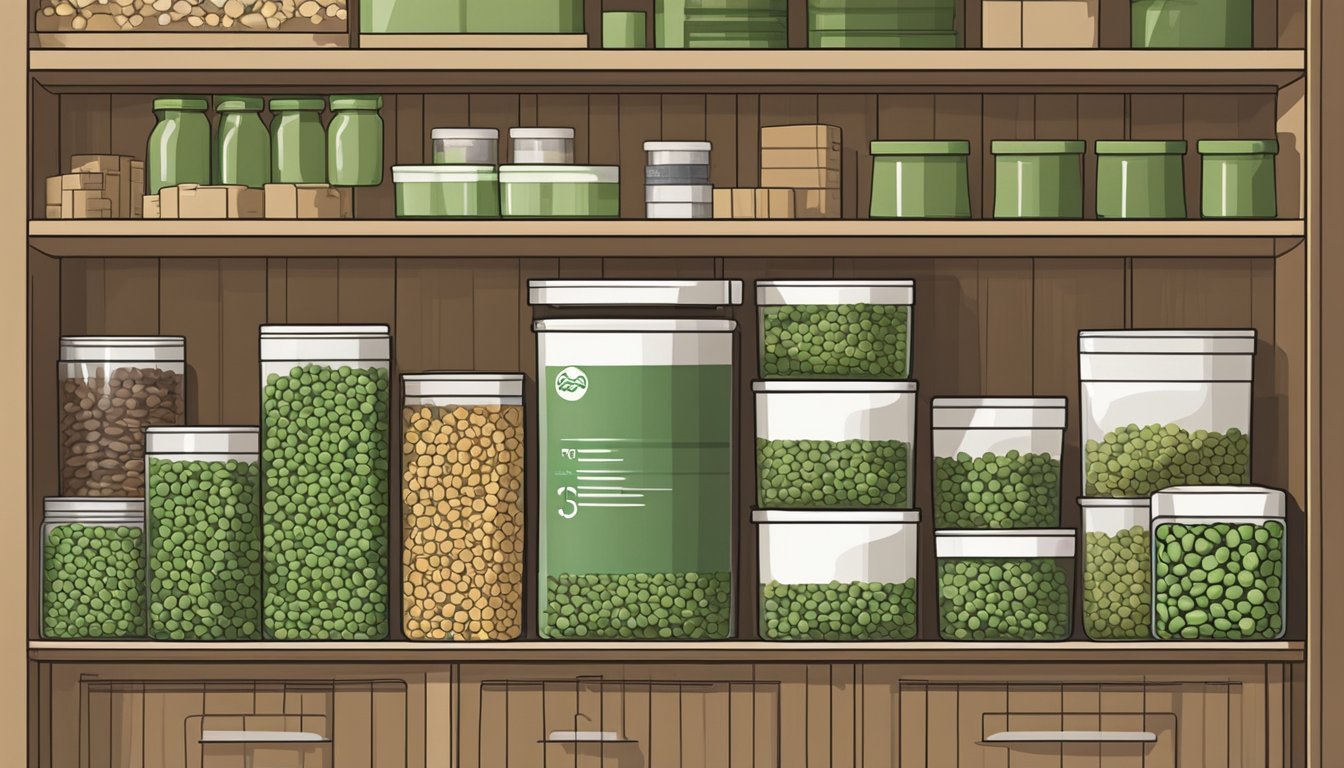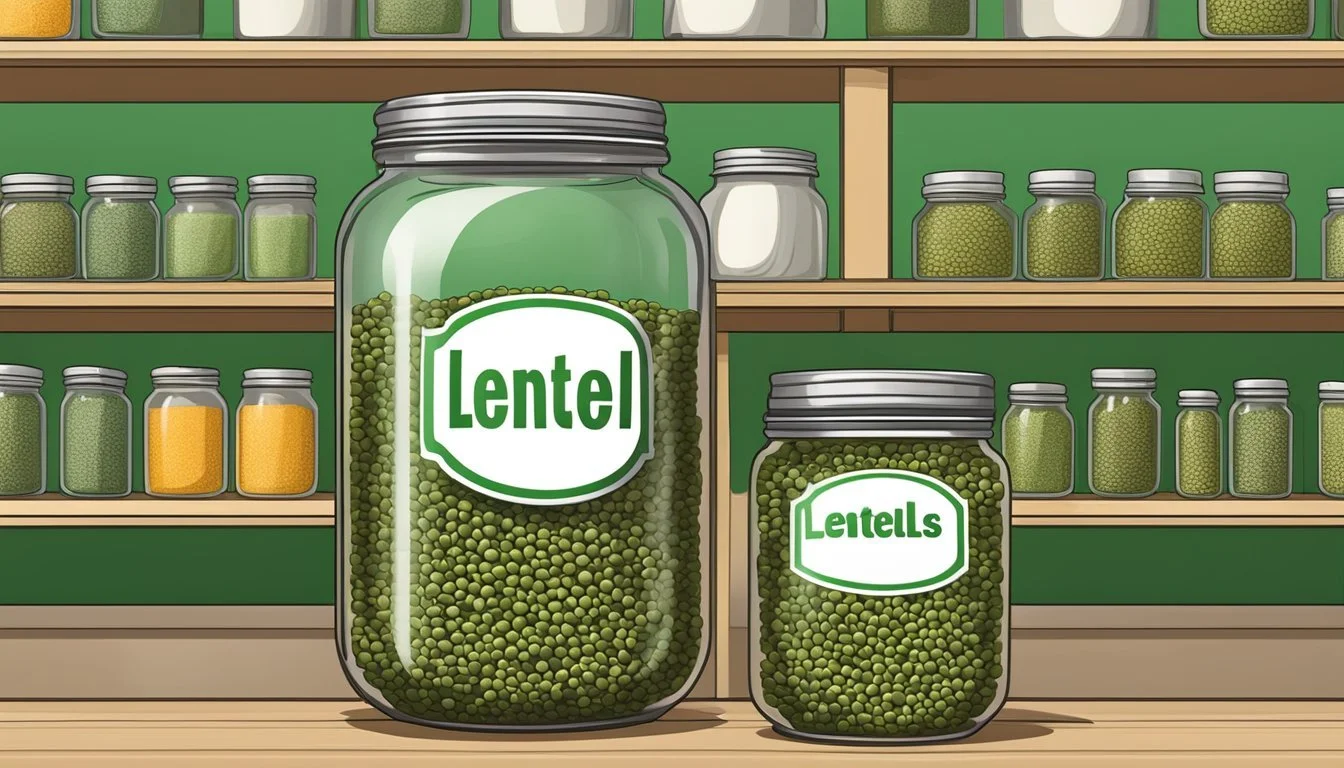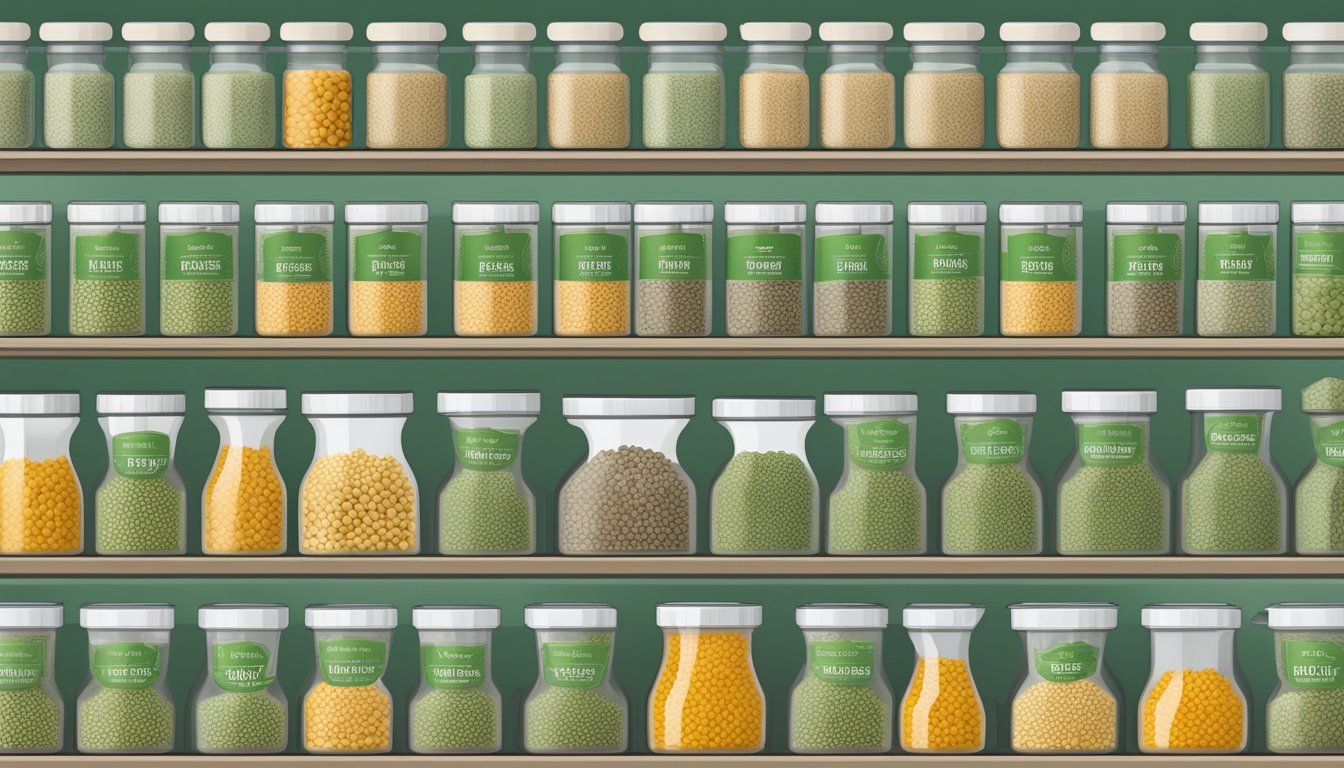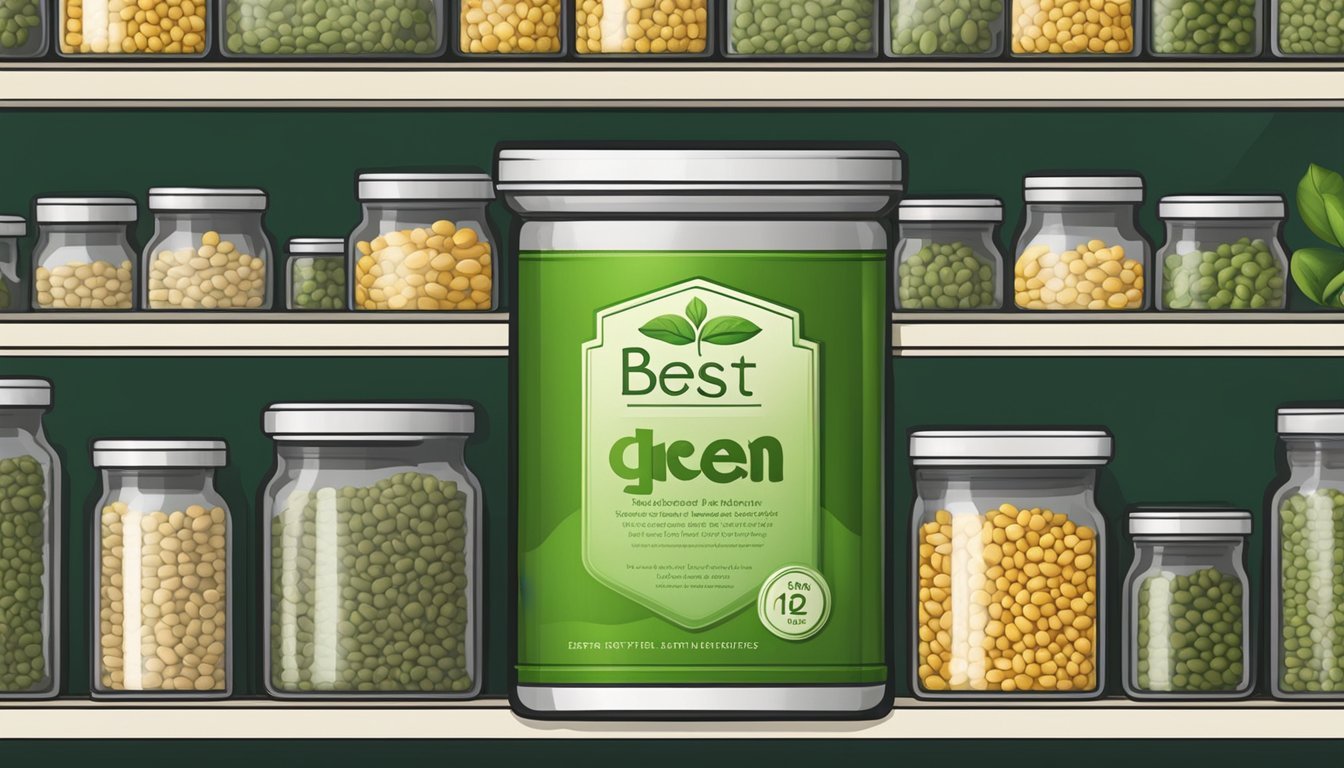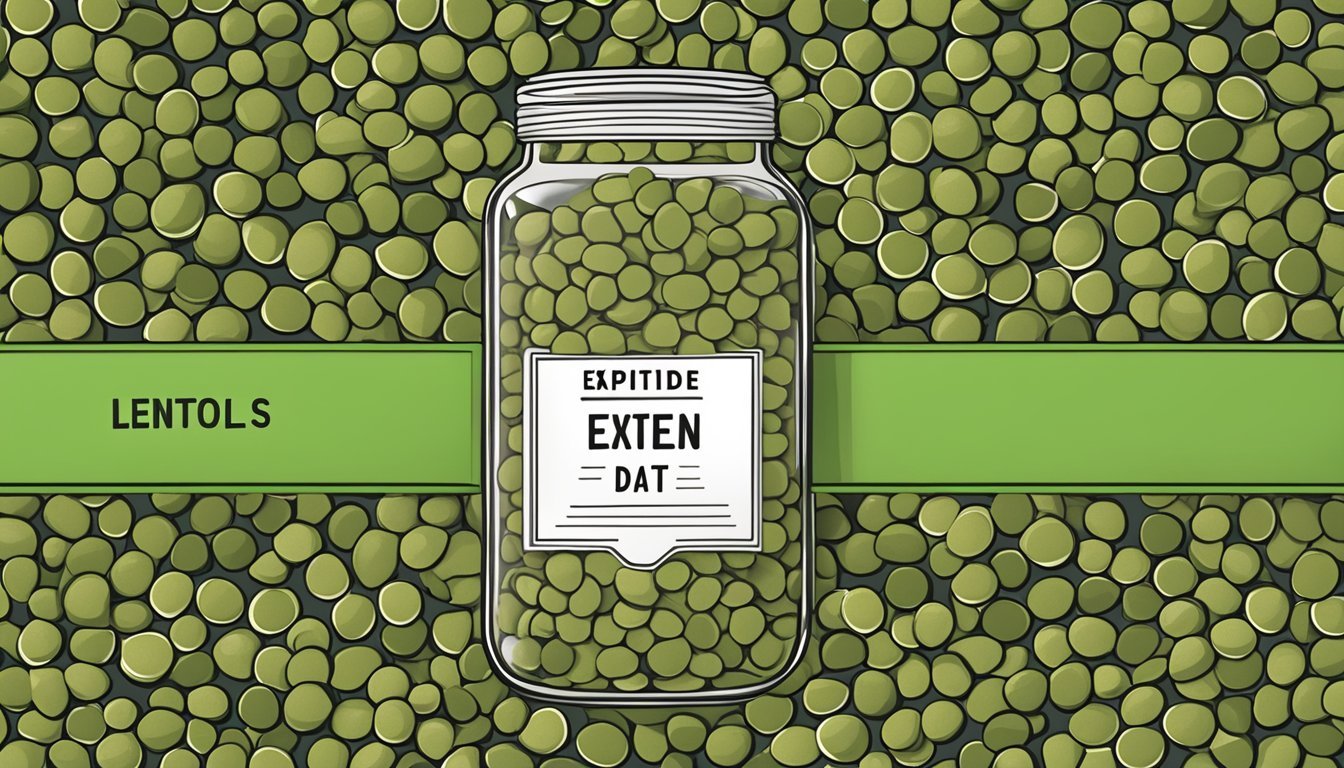How Long Do Green Lentils Last?
Shelf Life and Storage Tips
Green lentils, known for their peppery flavor, are a nutritional powerhouse packing essential nutrients like fiber and iron. As a type of legume, they are commonly lauded for their health benefits and versatility in culinary applications. Unlike their canned counterparts, which are pre-cooked and thus have a shorter shelf life, dried green lentils can last significantly longer when stored properly due to their low moisture content.
The longevity of green lentils in your pantry is influenced by factors such as storage conditions and packaging. When stored in a cool, dry place inside an airtight container, green lentils can maintain their quality for up to two to three years. However, for optimal taste and texture, it is advisable to consume them within a year of purchase.
Consideration of health risks associated with spoilt lentils is also crucial. While lentils do not spoil as easily as meat or dairy, they can still become inedible and potentially harmful if not stored or handled correctly. Signs of bad lentils include discoloration, an off-putting smell, or the presence of mold. It's important to ensure that, when prepared, lentils are cooked thoroughly to a safe internal temperature to prevent any foodborne illnesses.
Understand Lentils
Lentils are a versatile and nutritious staple, but it's essential to recognize the varieties, their nutritional profiles, and the range of culinary uses they offer.
Lentil Varieties
Lentils come in several types, each with its distinct color and texture. Green lentils hold their shape well and have a slightly peppery flavor, making them suitable for salads and side dishes. Red lentils (how long do red lentils last?) cook quickly and are often used in dishes like lentil soup and lentil curry, as they become soft and give a creamy texture. Brown lentils are the most common variety, with a mild earthy flavor, while French lentils, or Puy lentils, are smaller and considered gourmet, known for their distinctive speckled appearance and firm texture.
Nutritional Value
Lentils are a powerhouse of nutritional value, packed with essential nutrients. They are an excellent source of fiber, which is beneficial for heart health and digestion. Lentils are also rich in protein, making them a key component in vegan and vegetarian diets. They contain important vitamins and minerals like folate, zinc, and potassium, which contribute to overall well-being.
Nutrient Benefit Fiber Supports heart and gut Protein Builds and repairs tissues Folate Aids cell and DNA health Zinc Strengthens the immune system Potassium Regulates fluid balance
Culinary Uses
Lentils are highly adaptable in the culinary world. Green lentils maintain their firm texture, so they work well as a base in salads or as a hearty side dish, often seasoned with a variety of herbs and spices. Lentil soup and lentil curry are two beloved dishes that commonly feature red or brown lentils, which break down to thicken the dish naturally. Lentils can also be a substitute for meat due to their high protein content, adding substance to veggie burgers and stews. They absorb seasonings well, which enables them to fit into a wide range of recipes from different cuisines.
Storage Guidelines
Green lentils, known for their nutritional value and versatility, maintain their quality when stored under optimal conditions. Correct storage not only preserves their texture and flavor but also extends their shelf life.
Storing Dry Lentils
Dry green lentils should be kept in a cool, dark place such as a pantry. For best results, they need to be stored in airtight containers to protect them from moisture and pests. Dry lentils have a shelf life of approximately 2-3 years, but using them within a year is advisable to enjoy their best quality.
Ideal conditions: Cool, dark pantry
Containment: Airtight containers
Storing Cooked Lentils
Once cooked, green lentils must be stored in the refrigerator to maintain food safety. Place them in airtight containers or sealable plastic bags to prevent contamination and moisture ingress. Properly stored, cooked lentils can safely last for 3-5 days in the refrigerator.
Refrigeration: 3-5 days in airtight container
Food Safety: Check for spoilage signs before use
Freezing Tips
Freezing cooked lentils is an effective way to extend their usability. Ensure they are cooled first before transferring them to a freezer-safe container or bag. Prevent freezer burn by removing as much air as possible. Stored this way, they can last for up to 6 months. When ready to use, defrost them in the refrigerator for optimal texture and flavor.
Preparation: Cool before freezing, limit air exposure
Defrosting: Thaw in the refrigerator
Shelf Life Explain
Green lentils, a versatile and nutritious pantry staple, vary in shelf life depending on their form—dried, cooked, or canned. Each type has specific storage recommendations to ensure freshness and quality.
Shelf Life of Dried Lentils
Dried green lentils can last approximately 1-2 years when stored in a pantry. Optimal conditions include a cool, dry place away from direct sunlight, which can degrade quality. Storage in an airtight container further extends their shelf life by preventing exposure to moisture and pests.
Optimal Storage Conditions: Cool, dry place
Expected Shelf Life: 1-2 years
Best Practices: Airtight container
Shelf Life of Cooked Lentils
Once cooked, green lentils retain their freshness for 3-5 days in the refrigerator. They should be stored in a sealed container to maintain moisture levels and prevent contamination. Beyond this period, cooked lentils may lose their texture and could develop spoilage indicative odors or mold.
Refrigeration Required: Yes
Shelf Life in Fridge: 3-5 days
Storage Method: Sealed container
Shelf Life of Canned Lentils
Canned green lentils, if unopened, are safe to consume until the expiry date printed on the can, which is typically 2-5 years from the date of packaging. After opening, any leftovers should be transferred to a sealed container and refrigerated, where they can last for up to a week.
Unopened Can Shelf Life: Up to the expiry date
Opened Can Shelf Life: Up to 1 week (refrigerated)
Post-opening Storage: Sealed container in fridge
Preventing Spoilage
To ensure the longevity of green lentils, it is essential to focus on preventing moisture accumulation, protecting them from pests, identifying spoilage signs, and following safe consumption guidelines.
Moisture and Mold
Green lentils should be stored in a dry environment to prevent mold growth, as moisture is a primary factor in fungal development. Upon purchasing, lentils should ideally be transferred to an airtight container. This practice maintains a moisture-free zone, effectively inhibiting mold and spoilage.
Ideal Storage Conditions:
Temperature: Keep in a cool, dry place.
Container: Use an airtight container for storage.
Pests and Bugs
To protect green lentils from bugs and pests, which can contaminate and eat away at the supply, a robust storage solution is critical.
Protective Measures:
Store lentils in strong, sealed containers that are impenetrable by pests.
Regularly inspect the storage area for any signs of infestation.
Spoilage Signs to Watch
Regular monitoring for spoilage signs is crucial for food safety. Discard lentils if you notice:
Discoloration: Unusual spots or a change in color.
Odors: Off or sour smells indicate spoilage.
Texture: Any presence of slime or unusual textures.
Safe Consumption Guidelines
For leftover cooked green lentils, employ stringent food safety measures to prevent food poisoning and minimize health risks.
Refrigeration: Store leftovers in the refrigerator within two hours of cooking.
Container: Use airtight containers to prevent bacterial growth.
Duration: Consume refrigerated leftovers within 3-4 days for optimal safety.
Cooking and Preparation
When cooking green lentils, understanding the optimal cooking times and soaking techniques can significantly influence the texture and flavor of the lentils. Proper preparation ensures that they are not only nutritious but also delicious.
Optimal Cooking Times
Green lentils typically require between 25-30 minutes of cooking time. The process involves bringing the lentils to a rapid boil and then lowering the heat to let them simmer uncovered. It is important to note that:
Whole green lentils: 15-20 minutes of cooking time.
Split red lentils: Approximately 5-7 minutes of cooking time.
Lentils are cooked when they are tender but still maintain a slight bite, indicating they are not overcooked.
Soaking Techniques
Soaking lentils can be a beneficial step in the preparation process. Here's what should be kept in mind:
Soak green lentils in a bowl with enough water to cover them for 6 to 8 hours or overnight, although this step is optional for green lentils.
Soaking can help decrease cooking time and make lentils easier to digest.
Remember, while soaking is advantageous for some varieties, green lentils do not require soaking before cooking and can be cooked directly after rinsing.
Utilizing Leftovers
When it comes to green lentil leftovers, the key is to ensure safe storage and reheating to maintain quality. Leftovers can be transformed through reheating or used in various recipes depending on one’s preference.
Reheating and Recipes
Leftover lentils prove to be versatile and can be included in multiple dishes. When reheating, they should be warmed thoroughly to at least 165°F to ensure food safety. In terms of recipes, lentil soup or lentil curry can benefit from the added texture and flavor of leftover lentils.
Lentil Soup: Gently reheat on the stove, adding a bit of water or stock if the soup has thickened in the fridge.
Lentil Curry: Mix the leftover lentils into the curry and reheat until simmering to merge the flavors.
Storing Leftover Lentils
To store cooked lentils, one must transfer them to an airtight container or a plastic bag, removing as much air as possible before sealing. They should be placed in the refrigerator to maintain quality.
Refrigeration: Store in the refrigerator for 3-4 days for optimal freshness.
Airtight Container: Utilize containers that seal well to protect the lentils from moisture and other contaminants.
Careful storage and reheating of leftover green lentils ensure they remain a delicious and safe meal addition.
Frequently Asked Questions
When discussing the shelf life of lentils, it's important to differentiate between the various types, such as green, red, brown, and French lentils. This section addresses common concerns regarding the shelf life, potential spoilage, and safety of consuming lentils.
Do Dried Lentils Go Bad?
Green lentils, along with other dried lentils, have an impressive shelf life when stored properly. Dry lentils can last up to a year or more without losing quality, provided they're kept in a cool, dry place away from direct sunlight. In an airtight container, lentils are less susceptible to moisture, which can lead to spoilage.
Can You Eat Expired Lentils?
Lentils past their expiration date might not necessarily be harmful if there are no signs of spoilage. However, their quality, flavor, or nutritional value could diminish over time. Expired lentils are generally safe to consume if they've been properly stored and show no signs of spoilage, though it's always best to err on the side of caution.
How to Tell if Lentils Are Spoiled?
To determine if lentils are spoiled, look for telltale signs such as:
Discoloration or off-odors: Any changes in color or unusual smells are clear indicators the lentils should not be consumed.
Mold or moisture presence: These are the most obvious signs that lentils have gone bad. It's crucial to discard any lentils with visible mold or that feel damp.
Spoiled lentils should always be thrown away to avoid potential foodborne illness. Regular checks of your pantry staples, such as lentils, can prevent the use of spoiled ingredients in your cooking.
Conclusion
Green lentils are a nutritious addition to any diet, offering significant protein, fiber, and essential vitamins and minerals. When purchasing green lentils, buyers should be aware of their considerable shelf life. Properly stored dry green lentils can last for up to two to three years. It is, however, best practice to consume them within one year to enjoy their optimal quality.
For cooked green lentils, storage in the refrigerator is crucial, and they should be consumed within 3 to 5 days to maintain food safety and nutritional value. To extend their use, cooked lentils may be frozen, with an approximate quality retention timeframe of six months.
Adhering to key storage tips enhances the shelf life of green lentils:
Keep dry lentils in a cool, dry place away from direct sunlight.
Store in airtight containers to protect them from moisture and pests.
Refrigerate cooked lentils in tight-sealed containers.
When considering food safety, one should inspect lentils before use for any signs of spoilage such as off odors, discoloration, or mold, especially if they have been stored for an extended period.
By following these guidelines, one ensures that their green lentils remain a safe and healthy food source, ready to contribute valuable nutrients to various meals.

